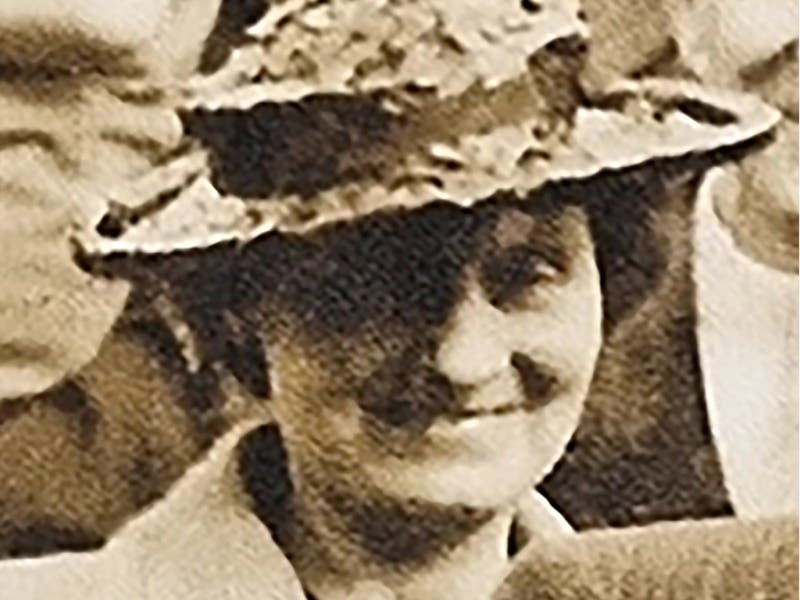MORE than a decade ago Subina Shami was passing the time of day with a colleague in the States Treasury where she worked as an accountant at the time.
‘How was she going to spend the weekend?’ the colleague asked innocently. Little did they know it but the question was to be the start of something quite unexpected. As Mrs Shami recalled: ‘I said: “Bleep, bleep, I’m cooking – for the whole weekend, that’s what I’m doing. And I wish I had something that would just do it all for me.”’
It occurred to her to check that she was not missing something but this was before the appearance of Instant Pot and many of the other multi-cookers that exist today. Her research showed there was a gap in the market for an invention that would ultimately turn out to be far more sophisticated.
An enthusiast of pressure cooking – especially popular in her native Pakistan and China – Mrs Shami had been frustrated by one thing. While the pressure cooker reduces cooking times significantly and tenderises cheaper cuts of meat within ten or 15 minutes, it presents a challenge to the cook with ambition. They want to introduce ingredients at different stages in the cooking process to ensure, for example, that vegetables retain their consistency.
‘I was doing that and using myself as a robot to, say, sauté the onions for three minutes. I’d do that, then I’d prepare the other ingredients. I’d sauté the meat, come back to the pressure cooker, open it and add the meat. Then I’d return later with something else. While I was doing all this, my thinking started because when I had my first job in 1986, after I’d finished my MBA, I was a computer programmer,’ she explained.
‘Something clicked because of the fact that I understood how computers work. They need very specific, step-by-step instructions and you can’t miss anything out. But they are also very quick and they’ll repeat themselves, so you can be the creative human and you can leave a machine to do all the repetitive things for you.’
What she now calls that ‘accidental thought’ was the genesis of Cuisine Machine, the invention for which she has received a string of awards, the most recent of which she will collect at the Global Women Inventors and Innovators Network in London next week.
Having been introduced to the late Roger Benest, the two formed a company to develop the project, taking advice from a patent lawyer to establish that the concept was sufficiently novel and unique to be patentable.
What makes Cuisine Machine different from a range of multi-cookers now on the market is that it stores a recipe’s different ingredients in separate containers and introduces them into the cooking cycle automatically, in accordance with pre-programmed recipes.
Having worked up a manual prototype – Mrs Shami reprising her role of robot to perform those time-consuming tasks because they were confident these processes could subsequently be automated – they demonstrated that the idea worked. ‘We ended up cooking something which was fantastic, so I thought “great, it does work”, she recalls with a smile.
A number of manufacturers expressed an interest but, perhaps unsurprisingly, wanted to see the automated version first, laying bare a dilemma that someone developing a new idea faces as they move from concept to product creation.
‘You’re told constantly that it’s an idea you’ve got to keep secret but if you keep it secret, how are you going to commercialise it? Eventually, I went to a product development company called 4D Products Ltd,’ she said.
What attracted her to them was the company’s combination of mechanical engineering and electronics experience.
Having experienced a number of setbacks – including the sad death of her business partner – she was granted a patent by the European Patent Office in August 2018 and began to work with 4D Products the following year. Now a sole trader, she was effectively giving it ‘one last shot’, inspired by the words of a friend who had told her that she would otherwise spend her time thinking ‘what if’.
Today the fruits of the partnership with 4D Products are evident on the designer’s own website. Mrs Shami’s invention appears on their home page with the imprimatur of a European Products Design Award, just one of the accolades the product has won with the prototype developed in the new partnership.
No doubt the clarity of thinking that comes from being an accountant with a background in computers helped in crystalising the brief for the designers.
‘I told them where we had got to and told them the sticking points, one of which was that if you cannot create ingredient pods with a release system, we’re not going to get any further. We’ve got to design the components. If they work, we’re going to go further. If they don’t, I’m pulling out,’ she recalled starkly.
But each milestone was passed successfully and Mrs Shami was expanding her knowledge in the process. For those interested to know how onions make it from storage pod to cooking bowl, Mrs Shami can describe the pressure and passage of compressed air through a solenoid valve with impressive technical mastery. But there were other things even more fundamental to commercial success.
‘What I learned was that the more moving parts you have, the more chance that things will break,’ she said. ‘You have to have a component which does at least two or three jobs, so you don’t have that many components that need to be manufactured, making it very expensive.’
Since it is not only the proof of a pudding that lies in the eating, what can you do with Cuisine Machine? It will sauté, fry, pot roast, steam and even blow dry heat like an oven to create a range of dishes.
‘It makes all kinds of food. If you pick up the Instant Pot recipe book, it will do anything like that because some of the features they have are the same but they don’t have the function of dropping in the ingredients,’ she explained. ‘That’s the unique selling point. It can cook all kinds of dishes – stews, casseroles, soups, Thai, Pakistani and Bangladeshi curries, rogan josh, chicken tikka masala, for example.’
Prompted by 4D Design, Mrs Shami entered Cuisine Machine into a series of awards. In addition to the European Product Design Awards 2021, they were winners at last year’s British Invention Show Awards and the Good Design Awards. When she collects the Overall Global Exemplary Diamond Award from the Global Women Inventors and Innovators Network next week, Mrs Shami will also give a presentation on her experiences.
However the story is not over. Now she needs to find a manufacturer who will take the product to a global market for multi-cookers, which is currently worth some $720 million (£601m).
‘I need to make connections. People need to get rid of the notion that an inventor is a mad scientist or whatever; they need to see this as a real person who has an ambitious idea, a complete lifestyle-changing idea. I want this to be the new washing machine or dishwasher,’ she said.
The design challenge is to take the prototype, made with off-the-shelf components, and turn it into a bespoke product that will take its place in the family kitchen. Currently measuring 49cm long by 34cm wide and 42cm high, the ambition is to reduce it by around ten centimentres for the market.
However, Mrs Shami sees no reason to restrict that market to the domestic. With a shortage of labour post-pandemic, she can envisage a sous-chef operating with a team that includes inanimate Cuisine Machine members playing their part in a restaurant’s culinary magic. She has spoken to a Michelin-starred chef who has offered to endorse the product if it is taken on by a reputable company.
‘There is nobody who has said it will not work. I’m not taking jobs away because you can never take human creativity away. What I’m taking away is the slogging, and if you’re sitting there saying I don’t have enough kitchen staff, then you’ll probably buy this,’ she said.
But there are other reasons she thinks that the mass market might respond favourably to Cuisine Machine, linking in with food and delivery companies who can help the customer access the raw ingredients for perfect recipes.
This has a resonance too for those who are troubled by the amount of food we waste, which includes vegetables that don’t make it to the supermarket shelves simply because of their irregular appearance. Synergies with a range of businesses, including growers, offer enormous potential for a sustainable future, Mrs Shami believes.
‘We just need somebody who can see the vision. I’m thinking, if we start today, we could easily get something out there to the masses in 18 months, if we get the right company which has the right resources, and that doesn’t just mean money. It means the supply chains and the connection to the different manufacturing facilities.
‘This is the future of cooking – we shouldn’t be standing there over a hot stove,’ she said.






